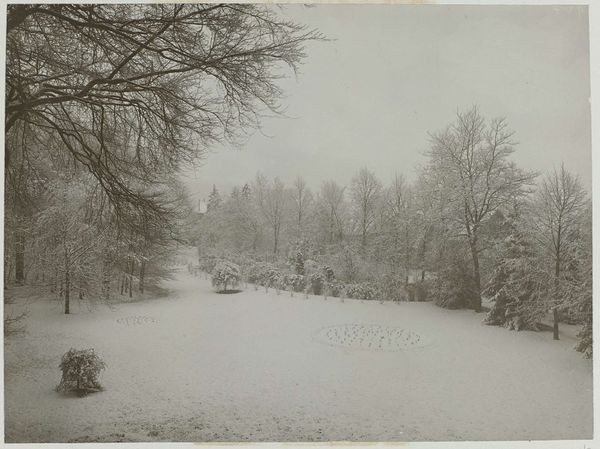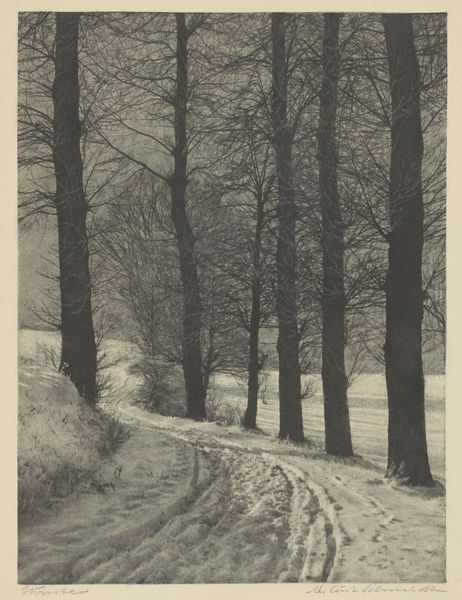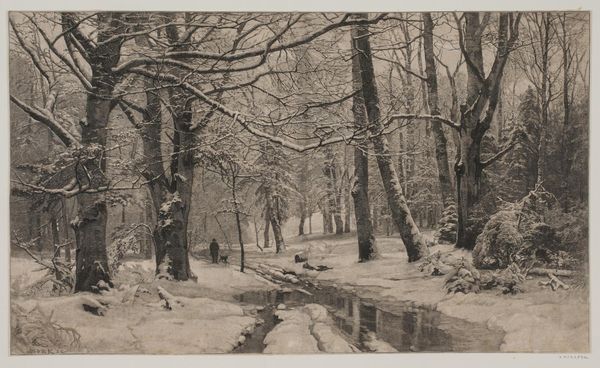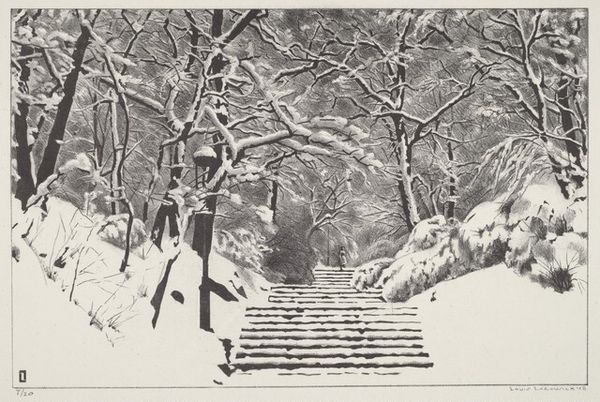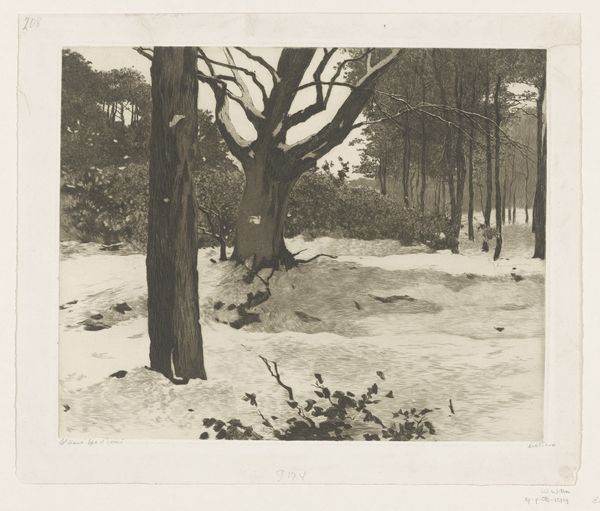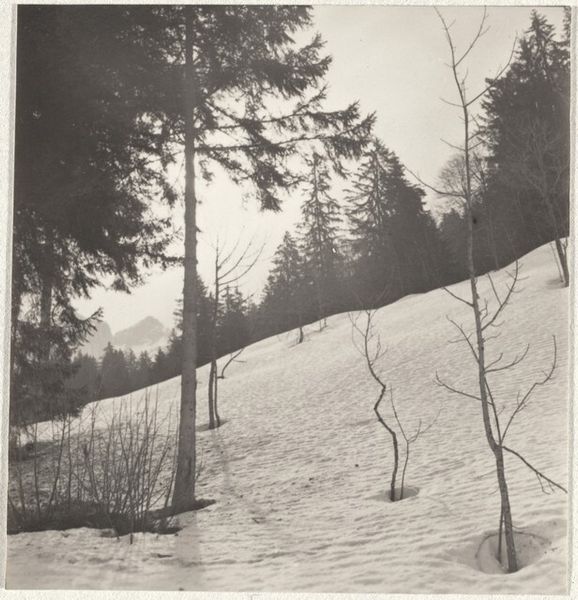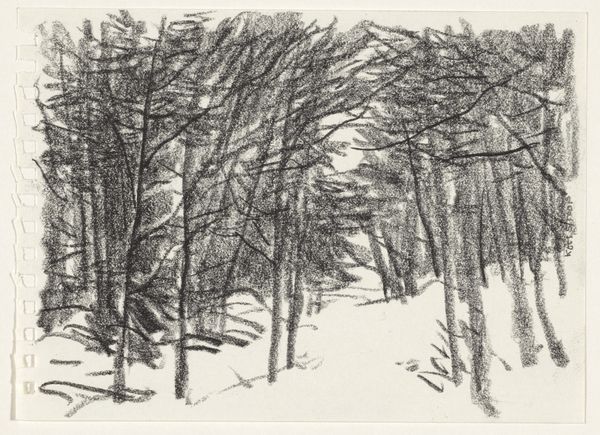
Dimensions: height 168 mm, width 229 mm, height 199 mm, width 268 mm
Copyright: Rijks Museum: Open Domain
Curator: A silent landscape; what do you make of it? Editor: A bit unsettling, actually. There's something about the monochrome and the tunnel-like perspective that feels both inviting and claustrophobic. Almost as if nature is reclaiming itself from…something. Curator: It's 'Besneeuwd boslandschap', or 'Snowy Forest Landscape,' a photograph taken by Henry Pauw van Wieldrecht in 1896, and it's a beautiful example of Pictorialism. Look at the way he evokes atmosphere, rather than striving for documentary realism. Editor: Ah, so we're not meant to simply observe the snow-covered trees. What symbolism do you see at play here? Is this about more than just aesthetic beauty? Curator: Absolutely. The snow itself is symbolic of purity, or a blank slate. In Northern European folklore, the winter forest is often associated with trials, tests, or transformation. Van Wieldrecht isn't just showing us a winter scene; he's presenting a journey, perhaps an inner one. Editor: The way the path recedes into the distance definitely reinforces that feeling of journey and self-discovery. But given that this was taken in the late 19th century, and considering the historical narratives of environmental exploitation and societal progress, I wonder if there's a subtle commentary on humanity’s place in nature. Are we losing ourselves in this "progress"? Curator: That’s a very insightful interpretation. Photography in this era, still quite new, allowed artists to question reality, to reflect a dreamlike vision or inner truth. The light feels deliberate and soft, as if he wanted to instill in us the quiet, slow pace of the natural world. Editor: It’s a stark contrast to the burgeoning industrial landscape, true. What a potent moment, when Pictorialism turned its back on relentless industrialization to explore an almost Romantic wilderness in soft-focus detail. It speaks of finding refuge in nature. Curator: It seems, ultimately, van Wieldrecht invites us to find our own symbols within it, making us feel vulnerable in nature but equally in touch with ourselves. Editor: I appreciate the invitation and agree. It's definitely made me reconsider my initial unease, seeing it less as a dark omen and more as a path to potential growth and transformation. Thank you!
Comments
No comments
Be the first to comment and join the conversation on the ultimate creative platform.

